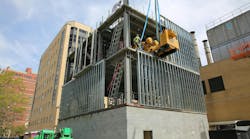If you’re using an enterprise asset management (EAM) system or computerized maintenance management system (CMMS), you need to create work orders in a way that allows the system to fully function.
Your system should display the necessary fields at work order creation time. Anyone with the authorization to create a work order must understand these fields are not optional. A decision to omit existing fields or add new ones should be made at the policy level, after careful consideration of maintenance goals and resources. And it should also be made after consultation with the vendor of the EAM or CMMS. You may not be using an EAM or CMMS feature that you should be using, and thus don’t see the importance of providing the related data at work order creation time.
Here’s a list of some recommended fields:
- Priority.
- Work type.
- Department and/or lead craft.
- Asset number. Every item of equipment has an asset number to uniquely and definitively identify it.
These fields may auto-fill upon entering the asset number. Enter any missing data such as:
- Location.
- Description.
- System/subsystem.
After creating the work order, review it for accuracy and completeness.




